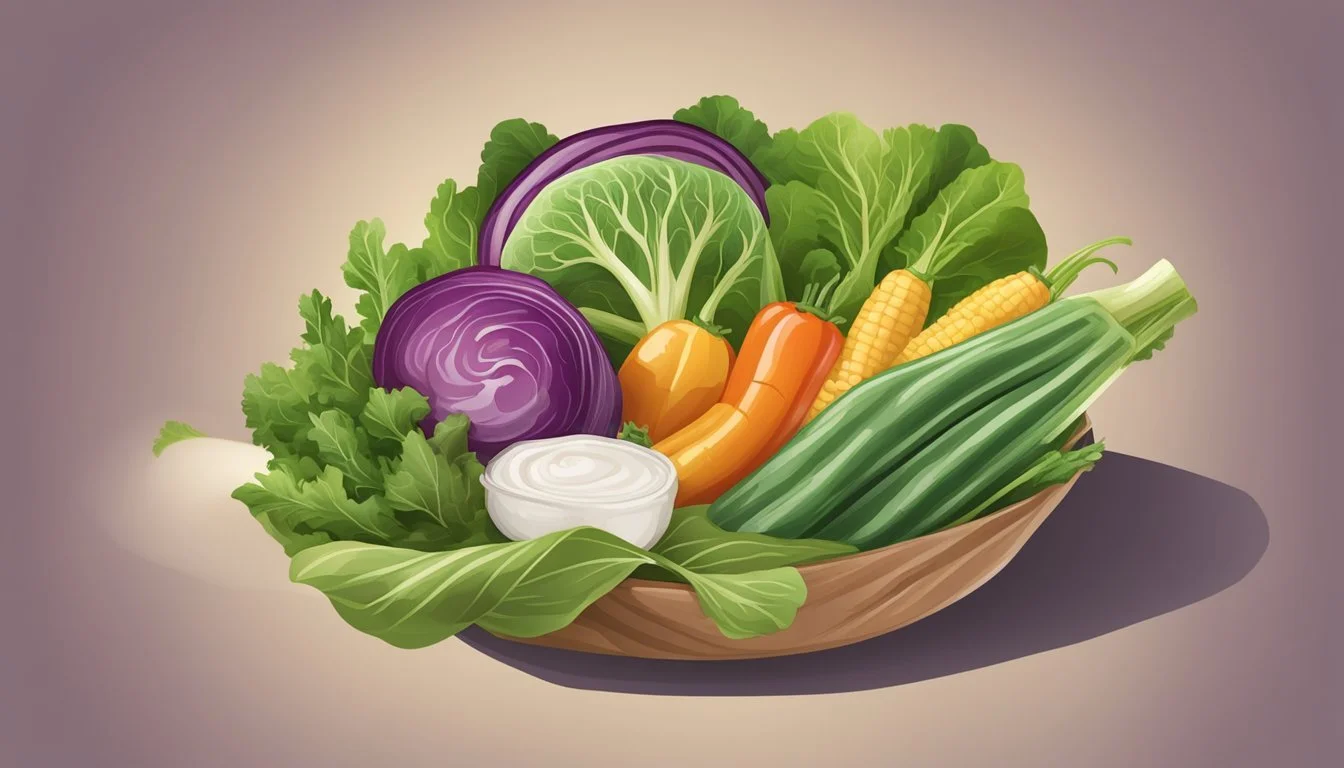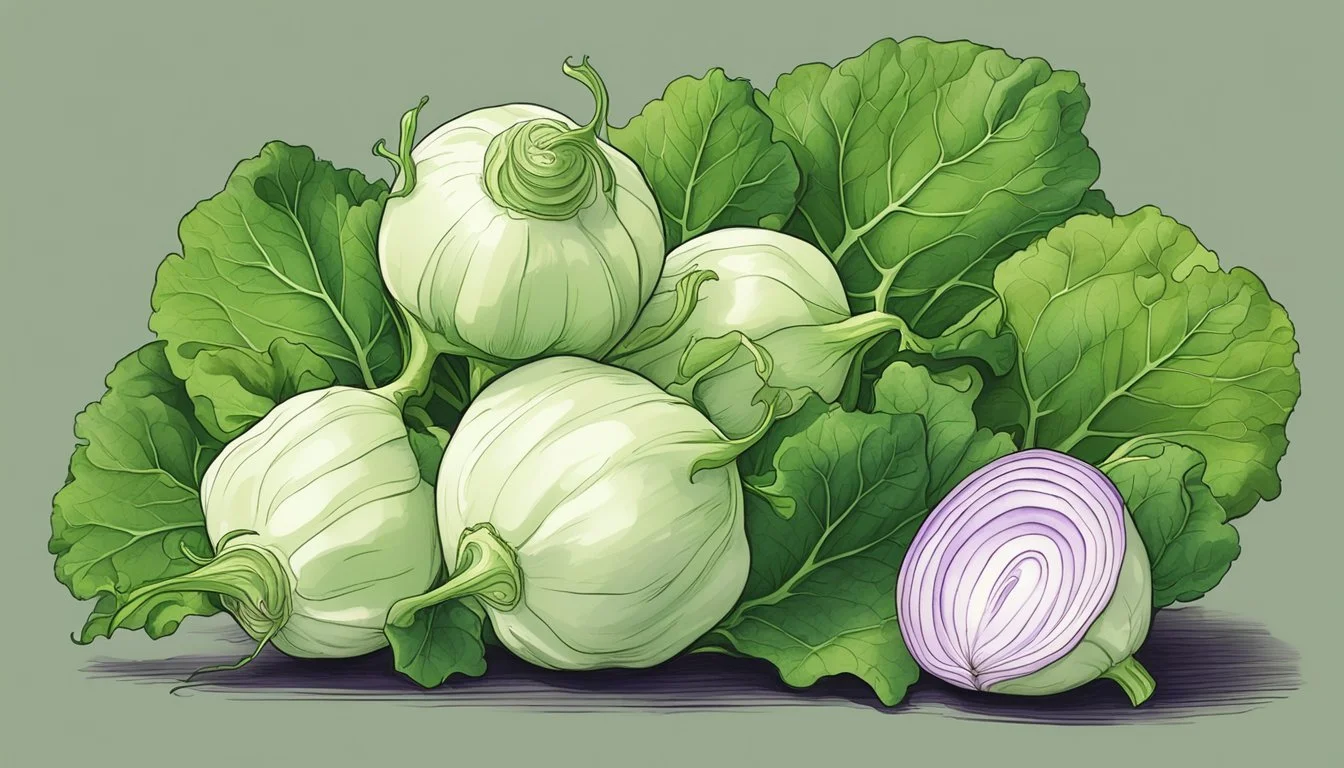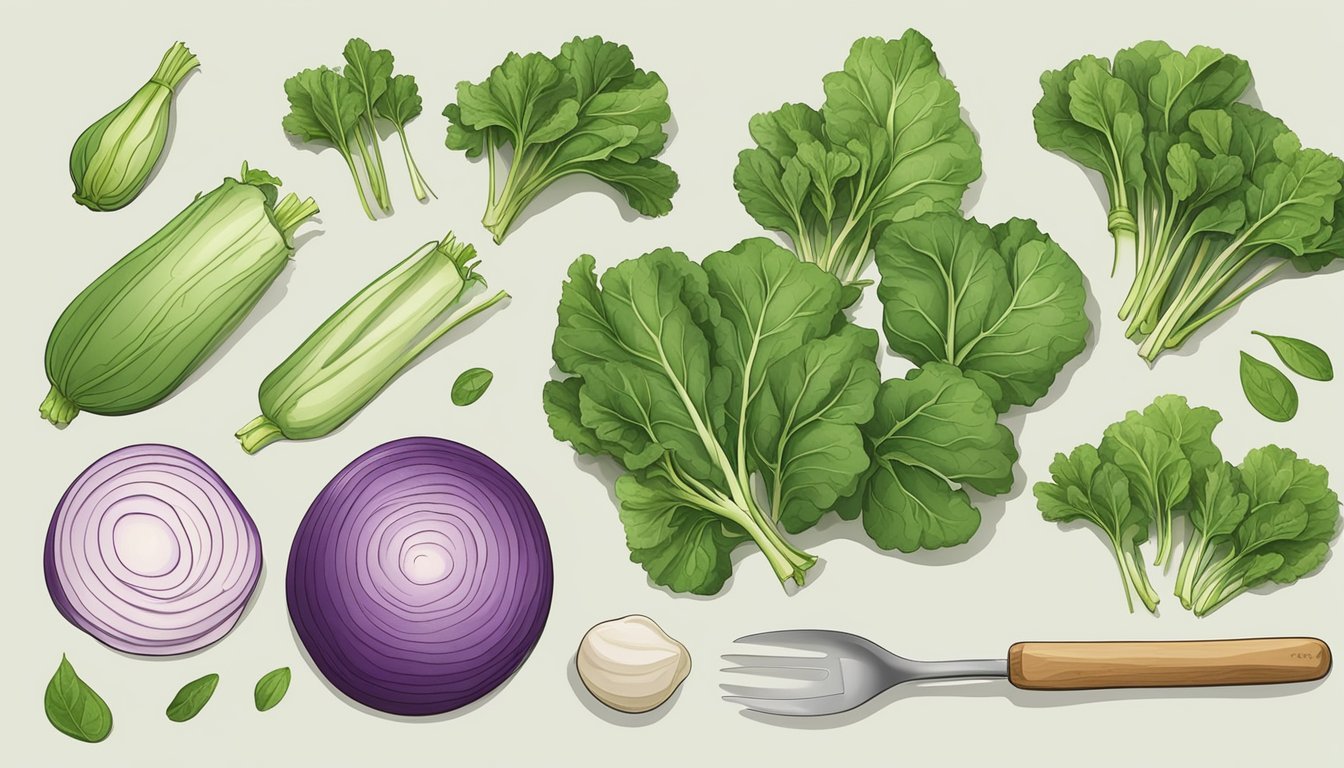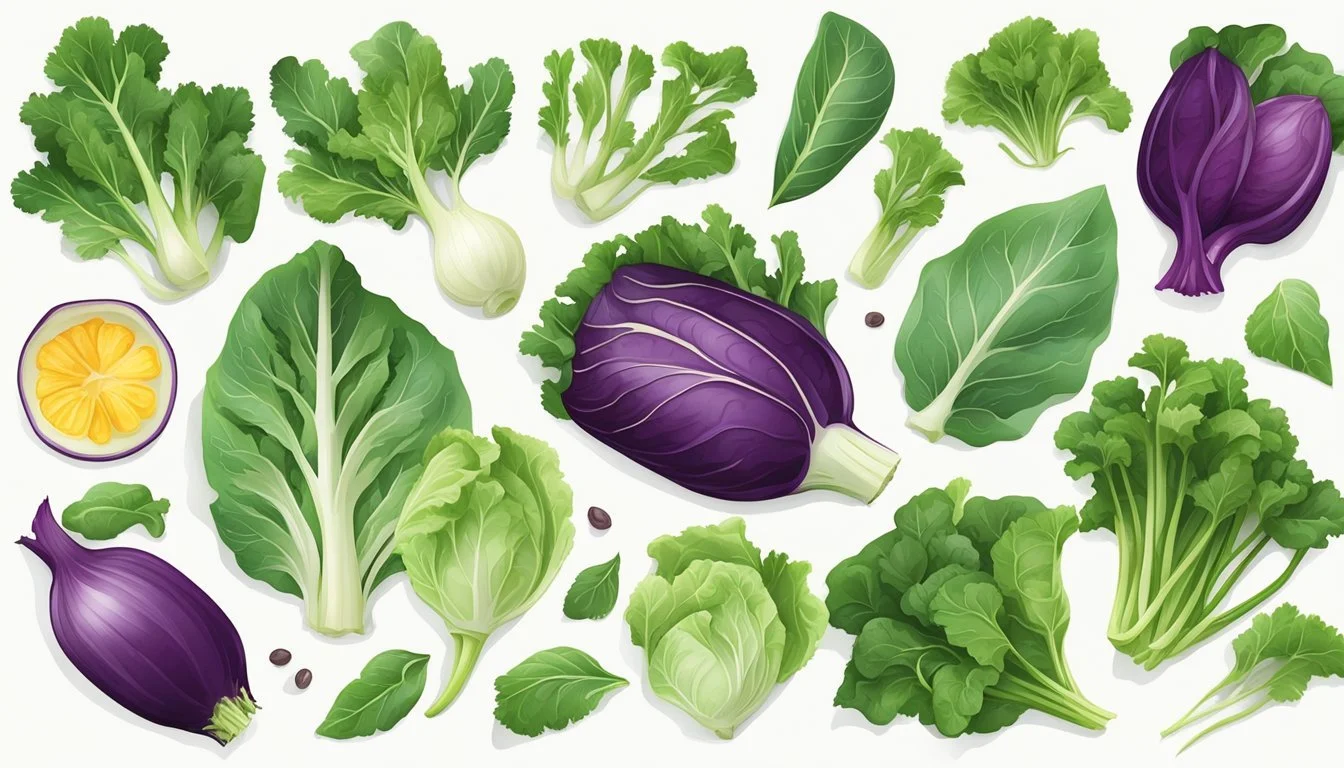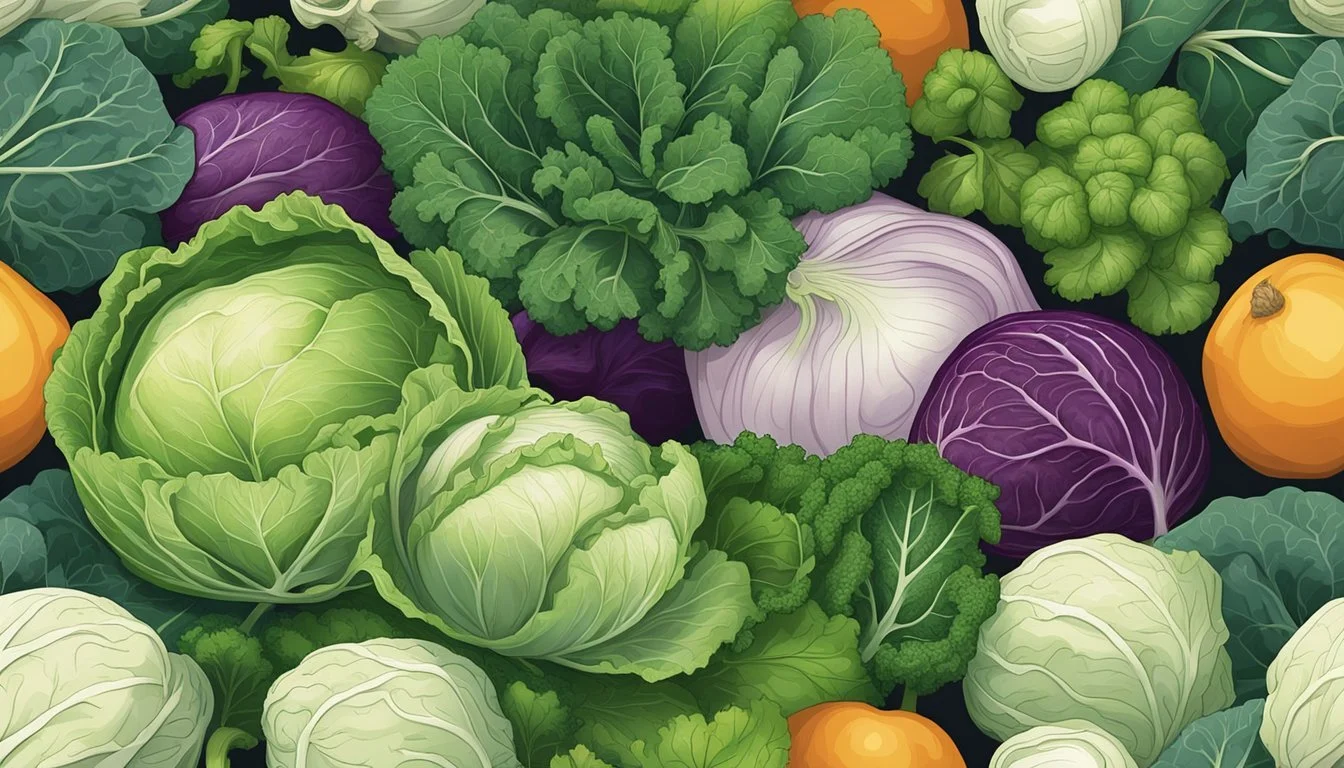Kohlrabi Leaf Wraps
A Low-Carb, Nutritious Alternative for Healthy Eating
Kohlrabi, a vegetable belonging to the Brassica family, emerges as a versatile ingredient in the low-carb kitchen. With its crisp texture and mild, sweet flavor, kohlrabi serves not just as a nutritious food but also as an innovative alternative for those looking to cut down on carbohydrates. The leaves of this vegetable, often overshadowed by its bulb, offer a bounty of nutrition and are perfectly suited for creating healthy wraps, a creative twist for those seeking variety in their low-carb meal plans.
These leafy greens are an excellent source of vitamin C, an antioxidant that aids in iron absorption, alongside being a beneficial source of dietary fiber, which supports the digestive system. Kohlrabi leaves are rich in nutrients while maintaining a low-calorie profile, making them an ideal choice for a nutritious alternative to traditional tortillas or bread. By incorporating them into meals, one may effortlessly add a nutritious punch without compromising on dietary goals.
Moreover, creating wraps with kohlrabi leaves aligns with many dietary lifestyles, including keto, paleo, or gluten-free, enhancing its appeal as a universal ingredient. Their sturdy texture holds up well when rolled with a variety of fillings, be it fresh vegetables, lean meats, or a spread of hummus, allowing them to cater to diverse tastes and preferences. Whether one is crafting a light snack or a hearty meal, kohlrabi leaf wraps prove to be a low-carb solution that does not skimp on flavor or nutritional value.
Understanding Kohlrabi
Kohlrabi, also known as the German turnip, is a versatile vegetable of the cabbage family offering a range of health benefits and nutrients. It is recognized for its low carbohydrate content and can be a nutritious ingredient in various dishes.
What is Kohlrabi?
Kohlrabi is a cruciferous vegetable, much like cabbage and broccoli, and is part of the Brassica genus. Its name literally translates to "cabbage turnip" in German, which reflects its round shape and similarity to the turnip, although it grows above ground. The entire plant is edible; however, it is the bulbous stem that is most commonly consumed, either raw or cooked. Kohlrabi can be identified by its round shape and long leafy stems; it has thick skin that can range from pale green to purple, with a creamy white flesh inside.
Nutritional Profile of Kohlrabi
Kohlrabi is known for its rich nutritional content. Below is a summary of the key nutrients it provides:
Fiber: Essential for digestive health
Vitamin C: An important antioxidant that supports immune function
Potassium: Helps to regulate blood pressure
Manganese: Supports bone development and the body's metabolism
Magnesium: Contributes to muscle function and nerve functions
Folate: Vital for DNA synthesis and repair
Vitamin B6: Crucial for new blood cell formation and energy metabolism
The vegetable is also low in calories, making it a suitable addition to weight management diets.
The Health Benefits of Kohlrabi
The consumption of kohlrabi can be associated with several health benefits:
Diabetes Management: Its low carbohydrate content makes it ideal for people managing their blood sugar levels.
Heart Health: The fiber, potassium, and other nutrients present in kohlrabi can contribute to cardiovascular health by helping to lower blood pressure and reduce the risk of heart disease.
Anti-Cancer Properties: As a part of the cabbage family, kohlrabi shares the group's reputed potential to help reduce the risk of cancers, particularly with its antioxidant properties.
Obesity and Weight Loss: Low in calories yet high in fiber, it is conducive to weight loss diets, promoting fullness and reducing overall calorie intake.
Bone Health: With its significant content of manganese and other minerals, kohlrabi supports the maintenance of strong, healthy bones.
Stroke Prevention: The high potassium content may lower the risk of stroke.
Preparation and Cooking Techniques
Kohlrabi leaf wraps offer a versatile and healthful option, suitable for various cooking methods that enhance their natural flavor and texture. Preparing the leaves properly sets the stage for delicious, low-carb dishes.
How to Peel and Cut Kohlrabi
The first step involves cleaning the kohlrabi leaves under cold water. To prepare them for wraps, one must separate the leaves from the stems. Using a knife, they should peel the woody skin off the bulb if it is to be included. Stems should be cut into thin slices for quicker cooking, while the leaves can be left whole or chopped depending on the recipe.
Cooking Methods for Kohlrabi
Kohlrabi leaves can be cooked in various ways:
Sautéing: Heat a tablespoon of olive oil or butter in a pan over medium heat. Add the prepared kohlrabi leaves and cook until they are wilted and tender.
Boiling: Boil kohlrabi leaves in water for 2-3 minutes for a softened texture.
Grilling: Brush the leaves with oil and grill until crisp edges form, providing a smoky flavor.
Roasting: Toss with oil, season with salt, and roast in a preheated oven until the edges are slightly crispy.
Raw vs Cooked: Exploring Textures and Flavors
Eating kohlrabi leaves raw in wraps maintains their crisp texture and a subtly sweet, peppery taste. Alternatively, cooking the leaves mellows the bitterness and sweetens the flavor profile. Cooked leaves offer a tender texture, suitable for stuffing or rolling into wraps, while roasted kohlrabi can provide a caramelized, hearty addition to any wrap.
Kohlrabi Leaf Wraps Recipe
Kohlrabi leaves provide a green, nutritious wrap option that is perfect for low-carb diets. This recipe offers a versatile way to enjoy a variety of fillings, from beef to chicken.
Ingredients and Substitutions
Kohlrabi Leaves: 6 large leaves, either green or purple, whichever is available.
Fillings:
Protein: 1 cup cooked and shredded chicken, beef, or pork. (Substitute with tofu or chickpeas for a vegetarian option.)
Vegetables: 1/2 cup diced white onion, bell peppers (What wine goes well with bell peppers?) for crunch and color.
Flavorings:
1 tablespoon olive oil (alternative: avocado oil)
Salt and pepper to taste
Optional herbs and spices like cilantro or paprika
Ingredients Quantity Substitutions Kohlrabi Leaves 6 large pieces None Protein (choice of) 1 cup Tofu, Chickpeas White Onion 1/2 cup diced Other types of onions Bell Pepper 1/2 cup slices Other crunchy vegetables Olive Oil 1 tablespoon Avocado Oil, Vegetable Oil Salt To taste Sea salt, Himalayan salt Pepper To taste Black, white, or red pepper
Step-by-Step Cooking Instructions
Prepare the Leaves: Rinse the kohlrabi leaves, pat them dry, and trim any excess stem. Blanch in boiling water for 30 seconds to soften, then immerse in ice-cold water.
Prepare the Filling: Heat oil in a pan over medium heat. Cook your choice of protein until browned. Add onion and bell pepper, season with salt and pepper, and cook until vegetables are tender.
Assemble the Wraps: Lay a kohlrabi leaf flat on a surface. Place a portion of the filling in the center. Fold the sides in and then roll the leaf tightly to form a wrap.
Final Touches: For a crisp exterior, the filled kohlrabi leaf wraps can be lightly seared in a pan with a touch more oil.
Serving and Pairing Suggestions
Serve the kohlrabi leaf wraps with a side of mixed greens or a simple coleslaw.
Pair with a tangy vinaigrette or creamy yogurt-based dip to complement the wraps' flavors.
For a complete meal, pair with a side of roasted vegetables or a cup of soup.
Incorporating Kohlrabi into Your Diet
Kohlrabi's versatility in the kitchen allows it to be a nutritious addition across various meal types, including salads, side dishes, and cooked fare like soups and stir-fries. Its leafy greens and bulb offer plentiful nutrients while complementing a low-carb lifestyle.
Kohlrabi in Salads and Slaws
Kohlrabi leaves, akin to kale and collard greens, are ideal for refreshing salads and crunchy slaws. Their rich content of vitamins A, C, and K can enhance the nutritional value of any salad. They can be sliced thinly and tossed with dressing for a crisp, healthful dish. As slaws, kohlrabi can be mixed with shaved brussels sprout, carrots, and a tangy vinaigrette for a low-carb option full of texture and flavor.
Kohlrabi as a Side Dish
When prepared as a side dish, kohlrabi can stand in for starchier vegetables like potatoes. One can roast kohlrabi bulbs with a drizzle of olive oil and a sprinkle of salt to create a satisfying, low-carb complement to any main course. Alternatively, pureeing steamed kohlrabi with garlic and herbs yields a creamy dish reminiscent of mashed cauliflower or broccoli, yet distinct in its own right.
Kohlrabi in Soups and Stir-Fries
In soups, kohlrabi adds body and nutrients without overwhelming the broth with excess carbohydrates. Its ability to absorb flavors makes it an excellent addition to both brothy and creamy soups. For stir-fries, kohlrabi's firm texture stands up well to high heat and complements other vegetables like bell peppers and mushrooms. Its taste, which is a cross between a radish and a turnip, introduces a unique element to these dishes.
Storage and Selection
When selecting and storing kohlrabi, one must focus on identifying fresh characteristics at purchase and maintaining those qualities through optimal storage techniques.
Choosing the Best Kohlrabi
Consumers should seek out kohlrabi with firm, blemish-free bulbs and vibrant green leaves. These indicators of freshness are especially evident at farmers markets or the grocery store produce aisle. The size of the kohlrabi can also impact flavor; smaller bulbs tend to be more tender and sweet.
Proper Storage Techniques
After purchase, proper storage extends the vegetable's freshness. Removing leaves and stems before storage is recommended, as they can accelerate moisture loss. In the fridge, store kohlrabi in a damp cloth and place it inside an airtight container to retain humidity. This method will keep the vegetable fresh for up to two weeks. Without a damp cloth, kohlrabi lasts for about six days.
Related Vegetables in the Brassica Family
Kohlrabi is part of the diverse and nutritious Brassica family, which includes vegetables renowned for their health benefits and culinary versatility.
Exploring Cruciferous Vegetables
The Brassica family, better known as cruciferous vegetables, includes a variety of nutrient-packed plants. Among them, broccoli, cabbage, cauliflower, kale, and Brussels sprouts stand out for their rich vitamin and mineral contents. These vegetables share a common ancestor, Brassica oleracea, which has been selectively bred over the centuries to produce the distinct varieties we find in our markets today.
Broccoli: Rich in vitamins C, K, and A, and famed for its antioxidant properties.
Cabbage: Offers a versatile use in dishes and provides high fiber as well as vitamin K.
Cauliflower: A low-carb favorite that’s high in choline and known for its roles in both raw and cooked dishes.
Kale: A powerhouse of nutrients including calcium, iron, and a range of vitamins.
Brussels Sprouts: Deliver a punch of vitamins C and K and have risen in culinary popularity due to their adaptability in recipes.
Culinary Uses and Benefits
Each member of the Brassica family contributes uniquely to culinary practices while offering a range of health benefits.
Broccoli is often steamed or stir-fried, retaining its nutrients and providing cancer-preventing potential.
Cabbage is frequently found in slaws and sauerkraut, bringing digestive health benefits along with its distinct flavor.
Cauliflower has gained fame as a grain substitute in rice and pizza crusts, offering a low-carb alternative without sacrificing texture or taste.
Kale can be enjoyed raw in salads or cooked, contributing significant fiber and micronutrients to promote heart health.
Brussels Sprouts are delicious roasted or sautéed, and their high-fiber content supports regularity and gut health.
These vegetables are not only related botanically but also share a common thread in their ability to enhance a healthy diet with their complex flavors and nutritional profiles.
Kohlrabi's Cultural Significance
Kohlrabi, both green and purple varieties, has played a significant role in cultural traditions and diets across the globe. Its hardiness through fall, winter, and spring has made it a staple in seasonal eating habits, with deep roots in Asia and Europe.
Historical Background
Kohlrabi's journey begins in Europe, where it has long been incorporated into German diet and culture. Prized for its nutritional value, kohlrabi has been a part of German cuisine (What Wine Pairs Perfectly With German Cuisine) for centuries, often associated with hearty dishes that are characteristic of the country's food traditions. As a biennial plant, thriving in cooler seasons, it suits the European climate, especially during the fall and spring months.
Kohlrabi Around the World
Moving beyond Europe, kohlrabi is also valued in Asian culinary practices. In South Asia, for instance, it is not only a food ingredient but a cultural symbol, deeply ingrained in everyday life and festive occasions. The vegetable's adaptability has allowed it to fit seamlessly into various traditional dishes, celebrated for both its taste and nutritional benefits. With a taste that can range from the crispness of green apples to the slight peppery flavor reminiscent of radishes, it provides versatility both in raw and cooked forms across Asia and Europe.
Nutrition and Dietary Considerations
Kohlrabi leaves are a nutritious choice for individuals looking to reduce carbohydrate intake or manage food sensitivities. They provide a rich array of nutrients while being low in calories and carbohydrates.
Low-Carb and Keto Diet Compatibility
Kohlrabi leaves are highly suitable for low-carb and ketogenic diets. One cup of raw kohlrabi contains about 8.4 grams of carbohydrates and 4.9 grams of fiber, leading to a low net carb content that can fit within the daily carb limit of such diets. Additionally, they are low in sugar and fat, with a negligible amount of saturated and unsaturated fats. The high fiber content offers benefits like improved gut health and can aid in maintaining stable blood sugar levels.
Calories: Low, making it an excellent choice for low-energy-density diets.
Protein: Moderate, contributes to the dietary protein requirement.
Vitamins: High in vitamin C, and contains other vitamins such as B6.
Minerals: Provides minerals like calcium, iron, and potassium.
Managing Dietary Restrictions and Allergies
For individuals with dietary restrictions or allergies, kohlrabi leaves can be a versatile ingredient. As they are naturally free of cholesterol, low in sodium, and do not contain common allergens like gluten, dairy, nuts, or soy, they are compatible with many dietary needs. The leaves can be used as a gluten-free wrap alternative, expanding options for those with celiac disease or gluten sensitivities.
Fiber: The high fiber content supports digestive health and can be suitable for digestive disorders.
Vitamins and Minerals: Their rich nutritional profile can help to address nutritional gaps commonly found in restricted diets.
Health Impact and Medical Research
Kohlrabi, with its valuable nutrition profile and health-promoting compounds, has been the subject of various medical studies. This section delves into the scientific research underpinning kohlrabi's health benefits and its role in combating inflammation and disease.
Research on Kohlrabi's Health Benefits
Researchers have identified kohlrabi as a rich source of dietary fiber and potassium, alongside significant amounts of vitamin C and vitamin B6. Its nutritional components contribute to a range of health benefits. The presence of high glucosinolates—compounds found in cruciferous vegetables—is linked to a potential reduced risk of certain cancers. Furthermore, one cup of kohlrabi can fulfill a considerable part of the daily fiber requirements, supporting gut health and blood sugar management.
Nutrition: Kohlrabi offers more than just low carbohydrate content; it's a powerhouse of nutrients.
Dietary Fiber: Aids in digestion and sustains blood sugar levels.
Potassium: Important for heart health and muscle function.
Kohlrabi's Role in Fighting Inflammation and Disease
The bioactive compounds found in kohlrabi demonstrate its powerful anti-inflammatory properties. Inflammation being a key factor in many chronic diseases, incorporating kohlrabi into one's diet might be beneficial for those managing conditions like heart disease and diabetes. Medical research has been exploring the ways in which the glucosinolates in kohlrabi can impact metabolic processes and potentially mitigate the development of inflammation-related diseases.
Inflammation and Disease:
Glucosinolates: Investigated for their role in cancer prevention.
Anti-inflammatory Effects: Can be integral in preventing and managing chronic diseases.

